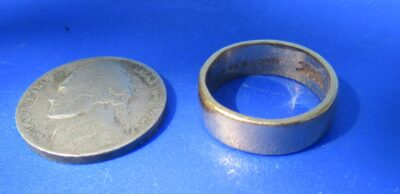Im still writing about the Anfibio because I love this detector. It’s signal tone is so clean, it’s ID so accurate that Im going into parks I’ve worked for 40 years and picking out the gold. Here’s how I do it. I favor the elliptical KR24 coil. This coil is like a knife blade in the junk. I run 99 Tones, and low Sens (70 or even 68) to keep the meter responses tame. For the same reason I run ID depth “Low.” I run 20 kHz if the conditions allow it. If there’s any electricity in the ground I bring the SAT up one increment. The secret to telling gold from trash is coil control. This is what lets you make use of the Anfibio’s processing power. Hitting a signal across one direction tells you nothing. It’s only when you do a few repeat passes and a few at a slight angle to the first that you get an idea as to the target’s consistency, alloying and shape. The Anfibio’s level of processing takes my accuracy to a whole new level. I can tell anything that’s alloyed. Targets that are made of fewer metals give narrow meter responses and my coil movements tell me this. This laddered target testing saves me a ton of useless digging of small weak foil signals, can slaw, even zinc cents that come in up in the big ring range. Thats my secret–use the coil, keep the Sensitivity low, run 99 Tones to hear as much detail in the junk and within individual targets as you can. In the water I go between 99 tones and Deep mode depending on how much junk there is.
For more information on getting results with this amazing detector check out my book: “Successful Treasure Hunting with the Nokta Makro Anfibio.”
cjc

A big 10k band from my local park.

a 6.2 gr. 22k band from the beach.

a 22k diamond ring from my local park.